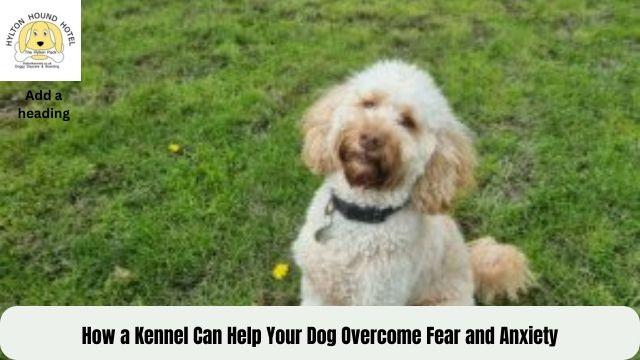Visiting the veterinarian can be a daunting experience for many dogs, often filled with unfamiliar sights, sounds, and smells. As loving pet owners, we want nothing more than to ease our furry friends’ anxieties and ensure their vet visits are as stress-free as possible. Whether it’s a routine check-up or a more involved procedure, keeping your dog calm is crucial for their well-being and for a smooth experience at the clinic. In this article, we will explore some of the best tips and strategies to help soothe your canine companion, turning what could be a nerve-wracking ordeal into a manageable, even positive, experience. With a little preparation and the right approach, you can help your dog feel more at ease, making vet visits less stressful for both of you.
Understanding Your Dogs Anxiety and Stress Triggers
Understanding what triggers your dog’s anxiety is crucial in helping them feel more at ease, especially during stressful events like vet visits. Dogs can be sensitive to a variety of stimuli, and identifying these can greatly improve their comfort. Common anxiety triggers include:
- Loud noises: Unexpected sounds or loud environments can cause distress.
- Unfamiliar scents and people: New surroundings and strangers can be overwhelming.
- Past traumatic experiences: Previous negative experiences at the vet may resurface.
Observing your dog’s body language can provide insights into their stress levels. Look for signs such as excessive panting, trembling, or avoidance behaviors. By recognizing these cues, you can tailor your approach to help alleviate their anxiety.
Creating a Comforting Routine Before the Vet Visit
Establishing a routine that provides comfort and reassurance can significantly ease your dog’s anxiety before a vet visit. Begin by engaging in a familiar and calming activity, such as a leisurely walk or a gentle play session. This not only helps to expend some energy but also creates a sense of normalcy and predictability. Additionally, try to maintain a relaxed demeanor yourself, as dogs are highly attuned to human emotions and can pick up on stress or anxiety. Consider incorporating calming aids like soothing music or essential oil diffusers with pet-safe scents to create a serene environment.
- Prepare a special treat: Offer a high-value treat or favorite toy to create a positive association with the vet visit.
- Practice car rides: If your dog is anxious about car travel, take short, enjoyable trips to desensitize them to the experience.
- Visit the vet for non-appointment interactions: Occasionally drop by the vet’s office just for a friendly visit, allowing your dog to sniff around and receive attention without any medical procedures.
By embedding these comforting elements into your pre-vet routine, you create a buffer of positivity and familiarity that can help mitigate the stress of the actual visit. Remember, consistency is key to building a foundation of trust and calmness.
Utilizing Calming Techniques and Tools for a Relaxed Experience
To ensure a serene vet visit for your furry friend, it’s essential to employ a blend of calming techniques and tools tailored to your dog’s needs. Start by familiarizing your dog with the vet’s environment. Bring them to the clinic for non-appointment visits to help them associate the space with positive experiences. This can significantly reduce anxiety when it’s time for an actual appointment. At home, practice handling exercises by gently touching your dog’s paws, ears, and mouth, simulating what they might experience during an exam.
- Comforting Toys: Pack a favorite toy or blanket that carries the scent of home. This can act as a source of comfort during the vet visit.
- Calming Music or White Noise: Playing soothing music or white noise in the car and waiting room can help mask unfamiliar sounds that might trigger anxiety.
- Aromatherapy: Consider using a dog-safe calming spray or diffuser with scents like lavender to promote relaxation.
- Natural Supplements: Consult your vet about natural calming supplements, such as chamomile or valerian root, that may help ease stress.
Remember, your own demeanor plays a crucial role. Stay calm and confident, as dogs often mirror their owner’s emotions. A relaxed guardian is the best reassurance for a nervous pup.
Rewarding Positive Behavior and Building Trust
Creating a positive association with the vet’s office can significantly ease your dog’s anxiety. Rewarding your dog’s positive behavior with treats, praise, or their favorite toy during vet visits can reinforce calmness and trust. When your dog sits patiently or allows the vet to examine them without fuss, reward them immediately. This positive reinforcement encourages them to repeat the behavior in future visits.
- Bring their favorite treats: Use them strategically to reward calm behavior.
- Praise frequently: Verbal affirmations can comfort and reassure your dog.
- Use calming toys: Distract your pet with a toy they love to keep their mind off the stress.
Building trust is a gradual process. Start by introducing your dog to the vet’s environment without an appointment, allowing them to explore the waiting area and meet the staff. These casual visits help familiarize your dog with the setting, making actual appointments less daunting. By consistently reinforcing positive behavior, you’ll not only make vet visits smoother but also strengthen the bond with your furry friend.

